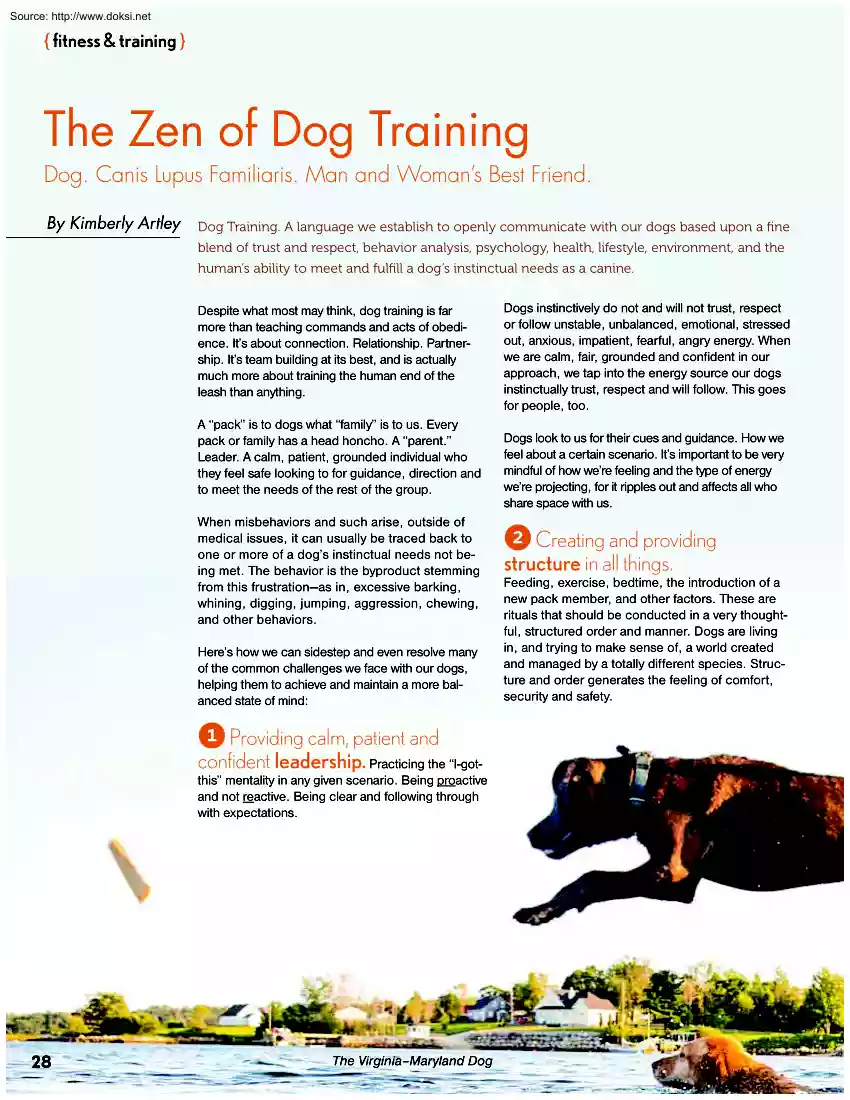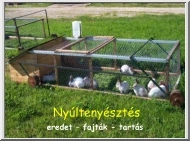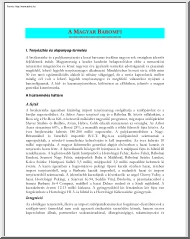Datasheet
Year, pagecount:2015, 3 page(s)
Language:English
Downloads:6
Uploaded:December 03, 2018
Size:1 MB
Institution:
-
Comments:
Attachment:-
Download in PDF:Please log in!
Comments
No comments yet. You can be the first!Most popular documents in this category
Content extract
Source: http://www.doksinet { fitness & training } The Zen of Dog Training Dog. Canis Lupus Familiaris Man and Woman’s Best Friend By Kimberly Artley Dog Training. A language we establish to openly communicate with our dogs based upon a fine blend of trust and respect, behavior analysis, psychology, health, lifestyle, environment, and the human’s ability to meet and fulfill a dog’s instinctual needs as a canine. Despite what most may think, dog training is far more than teaching commands and acts of obedience. It’s about connection Relationship Partnership It’s team building at its best, and is actually much more about training the human end of the leash than anything. A “pack” is to dogs what “family” is to us. Every pack or family has a head honcho. A “parent” Leader. A calm, patient, grounded individual who they feel safe looking to for guidance, direction and to meet the needs of the rest of the group. When misbehaviors and such arise, outside of
medical issues, it can usually be traced back to one or more of a dog’s instinctual needs not being met. The behavior is the byproduct stemming from this frustrationas in, excessive barking, whining, digging, jumping, aggression, chewing, and other behaviors. Here’s how we can sidestep and even resolve many of the common challenges we face with our dogs, helping them to achieve and maintain a more balanced state of mind: 1 Providing calm, patient and confident leadership. Practicing the “I-gotthis” mentality in any given scenario Being proactive and not reactive. Being clear and following through with expectations. 28 The Virginia–Maryland Dog Dogs instinctively do not and will not trust, respect or follow unstable, unbalanced, emotional, stressed out, anxious, impatient, fearful, angry energy. When we are calm, fair, grounded and confident in our approach, we tap into the energy source our dogs instinctually trust, respect and will follow. This goes for people, too. Dogs
look to us for their cues and guidance. How we feel about a certain scenario. It’s important to be very mindful of how we’re feeling and the type of energy we’re projecting, for it ripples out and affects all who share space with us. 2 Creating and providing structure in all things. Feeding, exercise, bedtime, the introduction of a new pack member, and other factors. These are rituals that should be conducted in a very thoughtful, structured order and manner. Dogs are living in, and trying to make sense of, a world created and managed by a totally different species. Structure and order generates the feeling of comfort, security and safety. Source: http://www.doksinet { fitness & training } 3 Establishing trust and respect. 5 Providing opportunities to This is the foundation from which every beautiful relationship blossoms and thrives, with both dogs and people. We build this through meeting our dog’s instinctual needs, following through, being clear in our
expectations and by simply spending quality time with them. practice social skills. Despite what most 4 Daily exercise to meet and deplete your dog’s individual energy stores. The intensity and duration of a dog’s exercise should always meet and exceed the energy level of the individual dog. Some dogs will do okay with a daily leash walk, but most don’t and need more. When we meet this need for our dogs, we help them maintain a calmer, more peaceful and balanced state of minda state of mind which gives them the ability to practice making good, sound decisions on their own. people think, being social doesn’t necessarily mean frolicking through lilac meadows or sharing a particularly long spaghetti noodle on a beautiful, starry night (Think: “Lady and the Tramp”). Being social is the ability to share space with others without being reactive. That’s it Not only do dogs learn how to relate to other dogs from their mother and siblings, but they rely on us to teach them
what’s socially acceptable and not acceptable. Manners Polite behavior. Social etiquette 6 Setting rules, boundaries and parameters. Just like children and teenagers pushing the envelope, dogs are trying to figure their place in the order of things. It’s up to us to clarify this for them, letting them know what’s permitted and acceptable, and what’s not. What we allow and do not address will always continue. WInter/Holiday 2014 | www.thevirginia-marylanddogcom 29 Source: http://www.doksinet { fitness & training } 7 Providing effective, fair discipline. Despite the feeling it may evoke, discipline is part of creating relationship and mutual understanding with your dog. Reinforcing wonderful, desired and acceptable behaviors and states of mind, and letting them know when they’re practicing behaviors and states of mind that aren’t desirable or acceptable. Reinforcement and discouragement We wouldn’t let our child bully other children, steal their lunch money, or
engage in other unacceptable behaviors, would we? 8 Providing sound, natural and species-specific nutrition. It’s up to us to provide the type of nourishment our dogs’ bodies were physiologically designed to take in, utilize and absorb. Real, enzyme-rich foods Not highly processed, additive and preservative-pumped, “food-like products.” Dogs are no different from any other living, eating organism in this regard. There’s a reason why their ailments are paralleling ours these days. 9 Providing kind, loving and gentle companionship. Dogs are social beings Pack animals. They crave companionship and don’t fair well when kept in isolation. They want to be with us. Near us Stay connected to us When we domesticated them thousands of years ago, we became their pack. And they became our family Providing means of mental stimulation. Although the canine brain takes in and processes information far differently than ours, a brain that goes unexercised is just as frustrating to them as
it would be to us. When we challenge our dogs in this manner (as one of my clients brilliantly said, burning “cognitive calories”), we’re helping them drain energy as well as training their brain and improving their mental acuity. Fulfilling breed-specific needs. Whether our dog is 100 percent this, or a mixture of this-and-that, it’s up to us to learn about our dog’s heritage. Some dogs were bred for very specific reasons, such as sporting, herding, protection or scent work, and these dogs will need to have this part of them, this natural, instinctual craving, fulfilled in some way. Have fun with this It’s a way for you and your dog to bond and spend quality time together. Try out some agility classes, take your dog for a swim, find a local spot that permits dogs to come herd sheep, have your dog pull a sled on a snowy day, or hide pieces of their favorite food around the house so they have to use their nose to find it. All are ways that pet owners can creatively help
their dogs satisfy this part of their genetic being. Although the amount will differ from dog to dog, as each dog is unique in their own, very special way, these are needs every dog has that must be met and fulfilled by us, their human guardian and companion. Fulfillment fosters relationship, creates balance and produces peace of mind. Unfulfillment diminishes relationship, creates imbalance and produces neurotic behaviors. What happens with children when they don’t receive guidance, direction and discipline? When there are no rules, boundaries or parameters set? When they don’t get mentally challenged? When they have no opportunity for play and exercise? When they do not have sound nutrition? When we chose these magnificent creatures to walk alongside us and accompany us in our walk of life, we assumed the responsibility for tending to their needs. It’s up to us to hold up our end of the bargain. 30 The Virginia–Maryland Dog
medical issues, it can usually be traced back to one or more of a dog’s instinctual needs not being met. The behavior is the byproduct stemming from this frustrationas in, excessive barking, whining, digging, jumping, aggression, chewing, and other behaviors. Here’s how we can sidestep and even resolve many of the common challenges we face with our dogs, helping them to achieve and maintain a more balanced state of mind: 1 Providing calm, patient and confident leadership. Practicing the “I-gotthis” mentality in any given scenario Being proactive and not reactive. Being clear and following through with expectations. 28 The Virginia–Maryland Dog Dogs instinctively do not and will not trust, respect or follow unstable, unbalanced, emotional, stressed out, anxious, impatient, fearful, angry energy. When we are calm, fair, grounded and confident in our approach, we tap into the energy source our dogs instinctually trust, respect and will follow. This goes for people, too. Dogs
look to us for their cues and guidance. How we feel about a certain scenario. It’s important to be very mindful of how we’re feeling and the type of energy we’re projecting, for it ripples out and affects all who share space with us. 2 Creating and providing structure in all things. Feeding, exercise, bedtime, the introduction of a new pack member, and other factors. These are rituals that should be conducted in a very thoughtful, structured order and manner. Dogs are living in, and trying to make sense of, a world created and managed by a totally different species. Structure and order generates the feeling of comfort, security and safety. Source: http://www.doksinet { fitness & training } 3 Establishing trust and respect. 5 Providing opportunities to This is the foundation from which every beautiful relationship blossoms and thrives, with both dogs and people. We build this through meeting our dog’s instinctual needs, following through, being clear in our
expectations and by simply spending quality time with them. practice social skills. Despite what most 4 Daily exercise to meet and deplete your dog’s individual energy stores. The intensity and duration of a dog’s exercise should always meet and exceed the energy level of the individual dog. Some dogs will do okay with a daily leash walk, but most don’t and need more. When we meet this need for our dogs, we help them maintain a calmer, more peaceful and balanced state of minda state of mind which gives them the ability to practice making good, sound decisions on their own. people think, being social doesn’t necessarily mean frolicking through lilac meadows or sharing a particularly long spaghetti noodle on a beautiful, starry night (Think: “Lady and the Tramp”). Being social is the ability to share space with others without being reactive. That’s it Not only do dogs learn how to relate to other dogs from their mother and siblings, but they rely on us to teach them
what’s socially acceptable and not acceptable. Manners Polite behavior. Social etiquette 6 Setting rules, boundaries and parameters. Just like children and teenagers pushing the envelope, dogs are trying to figure their place in the order of things. It’s up to us to clarify this for them, letting them know what’s permitted and acceptable, and what’s not. What we allow and do not address will always continue. WInter/Holiday 2014 | www.thevirginia-marylanddogcom 29 Source: http://www.doksinet { fitness & training } 7 Providing effective, fair discipline. Despite the feeling it may evoke, discipline is part of creating relationship and mutual understanding with your dog. Reinforcing wonderful, desired and acceptable behaviors and states of mind, and letting them know when they’re practicing behaviors and states of mind that aren’t desirable or acceptable. Reinforcement and discouragement We wouldn’t let our child bully other children, steal their lunch money, or
engage in other unacceptable behaviors, would we? 8 Providing sound, natural and species-specific nutrition. It’s up to us to provide the type of nourishment our dogs’ bodies were physiologically designed to take in, utilize and absorb. Real, enzyme-rich foods Not highly processed, additive and preservative-pumped, “food-like products.” Dogs are no different from any other living, eating organism in this regard. There’s a reason why their ailments are paralleling ours these days. 9 Providing kind, loving and gentle companionship. Dogs are social beings Pack animals. They crave companionship and don’t fair well when kept in isolation. They want to be with us. Near us Stay connected to us When we domesticated them thousands of years ago, we became their pack. And they became our family Providing means of mental stimulation. Although the canine brain takes in and processes information far differently than ours, a brain that goes unexercised is just as frustrating to them as
it would be to us. When we challenge our dogs in this manner (as one of my clients brilliantly said, burning “cognitive calories”), we’re helping them drain energy as well as training their brain and improving their mental acuity. Fulfilling breed-specific needs. Whether our dog is 100 percent this, or a mixture of this-and-that, it’s up to us to learn about our dog’s heritage. Some dogs were bred for very specific reasons, such as sporting, herding, protection or scent work, and these dogs will need to have this part of them, this natural, instinctual craving, fulfilled in some way. Have fun with this It’s a way for you and your dog to bond and spend quality time together. Try out some agility classes, take your dog for a swim, find a local spot that permits dogs to come herd sheep, have your dog pull a sled on a snowy day, or hide pieces of their favorite food around the house so they have to use their nose to find it. All are ways that pet owners can creatively help
their dogs satisfy this part of their genetic being. Although the amount will differ from dog to dog, as each dog is unique in their own, very special way, these are needs every dog has that must be met and fulfilled by us, their human guardian and companion. Fulfillment fosters relationship, creates balance and produces peace of mind. Unfulfillment diminishes relationship, creates imbalance and produces neurotic behaviors. What happens with children when they don’t receive guidance, direction and discipline? When there are no rules, boundaries or parameters set? When they don’t get mentally challenged? When they have no opportunity for play and exercise? When they do not have sound nutrition? When we chose these magnificent creatures to walk alongside us and accompany us in our walk of life, we assumed the responsibility for tending to their needs. It’s up to us to hold up our end of the bargain. 30 The Virginia–Maryland Dog





